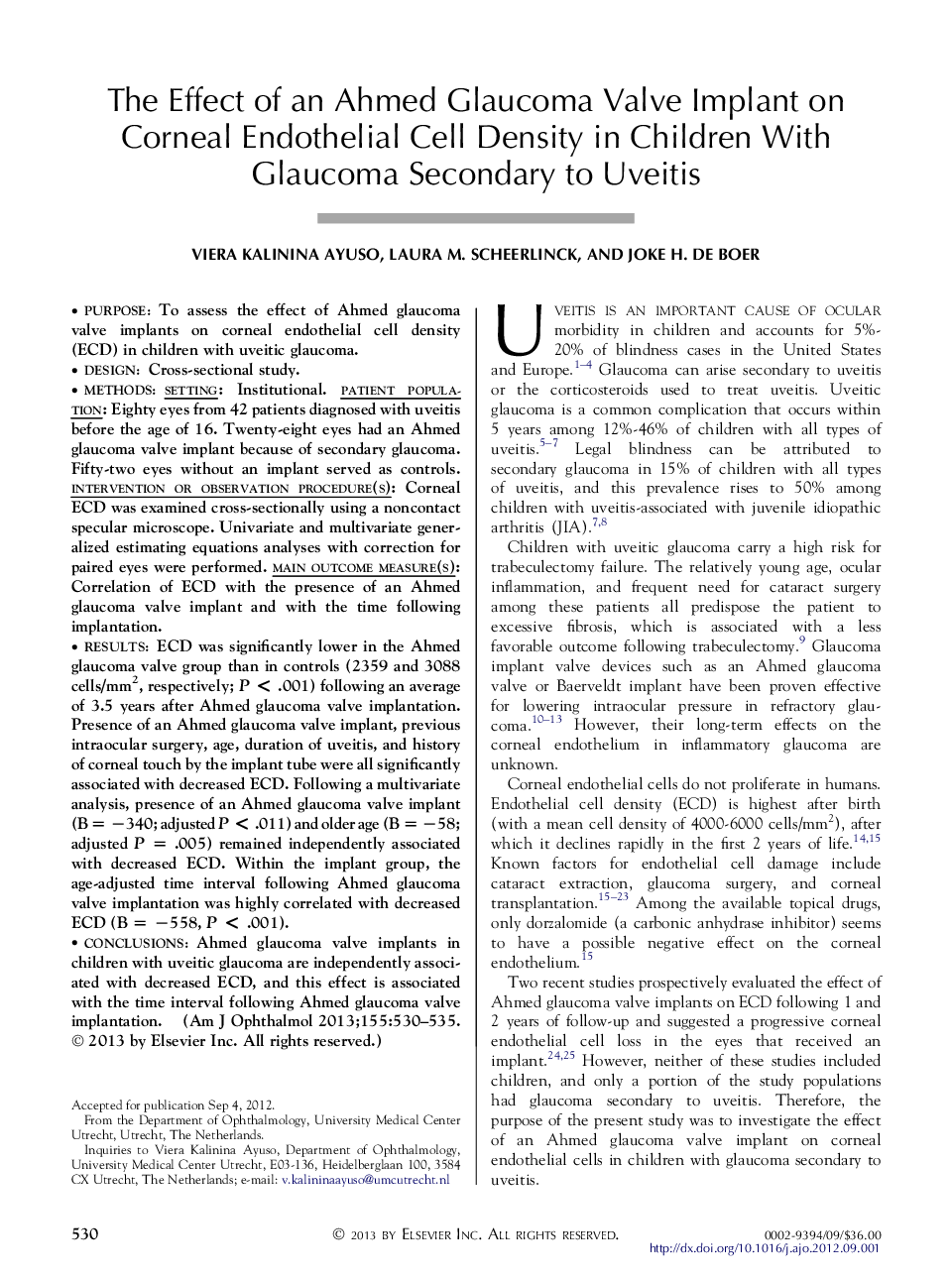| Article ID | Journal | Published Year | Pages | File Type |
|---|---|---|---|---|
| 4003001 | American Journal of Ophthalmology | 2013 | 6 Pages |
PurposeTo assess the effect of Ahmed glaucoma valve implants on corneal endothelial cell density (ECD) in children with uveitic glaucoma.DesignCross-sectional study.Methodssetting: Institutional. patientpopulation: Eighty eyes from 42 patients diagnosed with uveitis before the age of 16. Twenty-eight eyes had an Ahmed glaucoma valve implant because of secondary glaucoma. Fifty-two eyes without an implant served as controls. intervention orobservationprocedure(s): Corneal ECD was examined cross-sectionally using a noncontact specular microscope. Univariate and multivariate generalized estimating equations analyses with correction for paired eyes were performed. mainoutcomemeasure(s): Correlation of ECD with the presence of an Ahmed glaucoma valve implant and with the time following implantation.ResultsECD was significantly lower in the Ahmed glaucoma valve group than in controls (2359 and 3088 cells/mm2, respectively; P < .001) following an average of 3.5 years after Ahmed glaucoma valve implantation. Presence of an Ahmed glaucoma valve implant, previous intraocular surgery, age, duration of uveitis, and history of corneal touch by the implant tube were all significantly associated with decreased ECD. Following a multivariate analysis, presence of an Ahmed glaucoma valve implant (B = −340; adjusted P < .011) and older age (B = −58; adjusted P = .005) remained independently associated with decreased ECD. Within the implant group, the age-adjusted time interval following Ahmed glaucoma valve implantation was highly correlated with decreased ECD (B = −558, P < .001).ConclusionsAhmed glaucoma valve implants in children with uveitic glaucoma are independently associated with decreased ECD, and this effect is associated with the time interval following Ahmed glaucoma valve implantation.
